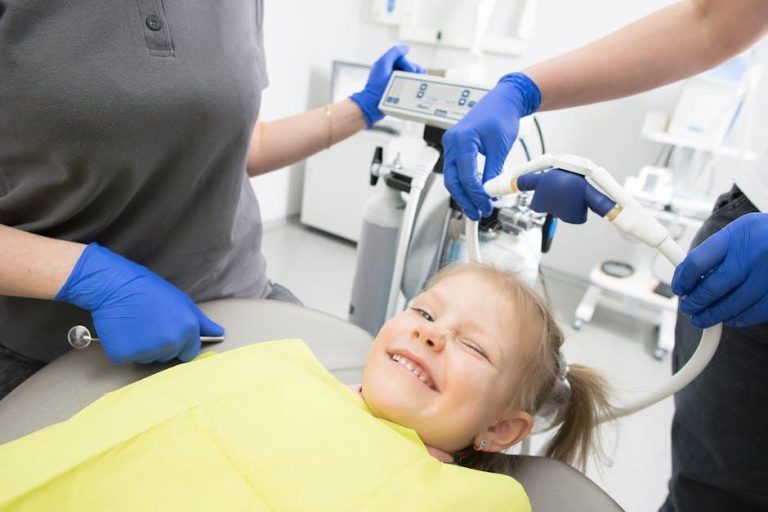1 in 3 Kids Has Dental Problems, Poll Finds – U.S. News & World Report
Recent findings published by U.S. News & World Report reveal a troubling statistic: 1 in 3 kids in the United States suffers from dental problems. This alarming data highlights growing concerns among parents, healthcare professionals, and educators about the oral health of children nationwide. If untreated, these dental issues can lead to pain, infections, and long-term consequences on overall wellbeing.
In this article, we’ll explore the key takeaways from the poll, discuss common dental problems children face, identify underlying causes, and provide practical tips for parents to protect their child’s smile. Read on to learn how you can help improve your child’s dental health and prevent costly visits to the dentist.
Key Findings From the Poll
The U.S. News & World Report poll surveyed thousands of households across the country to understand the prevalence of dental problems in children.
| Statistic | Percentage/Rate |
|---|---|
| Children with dental problems (ages 2-17) | 33% (1 in 3 kids) |
| Common issues reported | Tooth decay, cavities, gum inflammation |
| Children lacking regular dental checkups | 40% |
| Children with dental anxiety preventing visits | 15% |
This evidence illustrates a widespread challenge to dental health among youth, underscoring the need for action.
Understanding Common Dental Problems in Kids
Oral health problems can manifest early in childhood and can range from mild to severe. Below are the most common dental issues reported among American children:
- Dental cavities (tooth decay): The most frequent childhood disease caused by plaque buildup and sugary diets.
- Gingivitis (gum inflammation): Early gum disease, causing redness, swelling, and discomfort.
- Tooth sensitivity: Pain or discomfort triggered by hot, cold, or sweet foods.
- Tooth trauma: Injuries caused by accidents or sports activities.
Why Prompt Treatment Matters
Left untreated, dental problems can escalate to serious infections, abscesses, and even impact speech or nutrition. Early diagnosis and proper care are essential to minimizing pain and avoiding costly treatments later.
Root Causes of Poor Dental Health in Children
Several factors contribute to the high prevalence of dental problems among kids in the U.S., including:
- Inadequate oral hygiene: Many children do not brush or floss properly or regularly.
- Poor diet: Frequent consumption of sugary snacks and beverages promotes cavities.
- Limited access to dental care: Socioeconomic barriers often prevent routine visits to a dentist.
- Lack of parental awareness: Parents may underestimate the importance of early oral health habits.
- Dental anxiety or fear: Anxiety around dental visits leads to avoidance of professional care.
Benefits of Maintaining Good Oral Health in Children
Investing in children’s dental health offers numerous benefits that extend beyond a sparkling smile, such as:
- Reduced risk of cavities and gum disease
- Improved self-esteem and confidence
- Better speech development
- A stronger immune system and overall health
- Lower financial burden from costly dental procedures
Practical Tips to Prevent Dental Problems in Kids
Parents can take proactive steps daily to safeguard their children’s oral health. Here are expert-backed recommendations:
- Ensure twice-daily brushing: Use fluoride toothpaste and a child-sized toothbrush.
- Encourage flossing: Begin flossing as soon as two teeth touch.
- Limit sugary snacks and drinks: Replace sodas and candies with water and healthy snacks.
- Schedule regular dental checkups: The American Dental Association recommends visits every six months.
- Teach good oral hygiene habits early: Make brushing fun and reward your child for consistency.
- Manage dental anxiety: Prepare your child for dental visits by reading books or watching videos about the dentist.
Case Study: The Johnson Family’s Journey to Better Dental Health
The Johnson family, from Ohio, struggled when their 7-year-old daughter Olivia developed multiple cavities despite regular brushing. After consulting their pediatric dentist, they realized:
- Olivia had never flossed regularly.
- Their diet was high in sugary fruit juices and snacks.
- Dental checkups were inconsistent due to scheduling challenges.
By implementing a stricter oral health routine, cutting down on sugary treats, and setting fixed dental appointments, Olivia’s dental health dramatically improved within 6 months. The family’s experience highlights the importance of education and persistence.
Firsthand Experience: A Parent’s Perspective
“When my son started complaining of tooth pain, I realized I had overlooked his oral hygiene habits,” says Maria T., a mother of two from Texas. “After learning about the 1 in 3 statistic, I prioritized dental care much more seriously, and now brushing and flossing have become part of our daily routine without battles.”
Her story reflects a common sentiment: awareness is the first step toward change.
FAQs About Children’s Dental Health
| Question | Answer |
|---|---|
| At what age should my child first visit the dentist? | The ADA recommends the first dental visit by age 1 or within six months after the first tooth appears. |
| Can baby teeth cavities affect permanent teeth? | Yes, untreated decay in baby teeth can lead to infection and damage to adult teeth developing underneath. |
| How can I make brushing more fun for my child? | Use colorful toothbrushes, play toothbrushing songs, or create reward charts to motivate them. |
| Are fluoride treatments safe for children? | Yes, professionally applied fluoride helps strengthen enamel and prevent cavities, as recommended by dentists. |
Conclusion
The revelation that 1 in 3 children faces dental problems is an urgent call to action for parents, caregivers, and healthcare providers alike. Establishing healthy oral care habits from an early age and ensuring consistent dental visits can dramatically reduce the prevalence of these preventable issues. By adopting proper hygiene, balanced nutrition, and proactive care, you can protect your child’s smile and overall health for years to come.
Stay informed, stay proactive, and take the necessary steps today to combat the dental epidemic affecting millions of children nationwide. For more tips and trusted resources, visit your local dental professional or check American Dental Association (ADA).


